
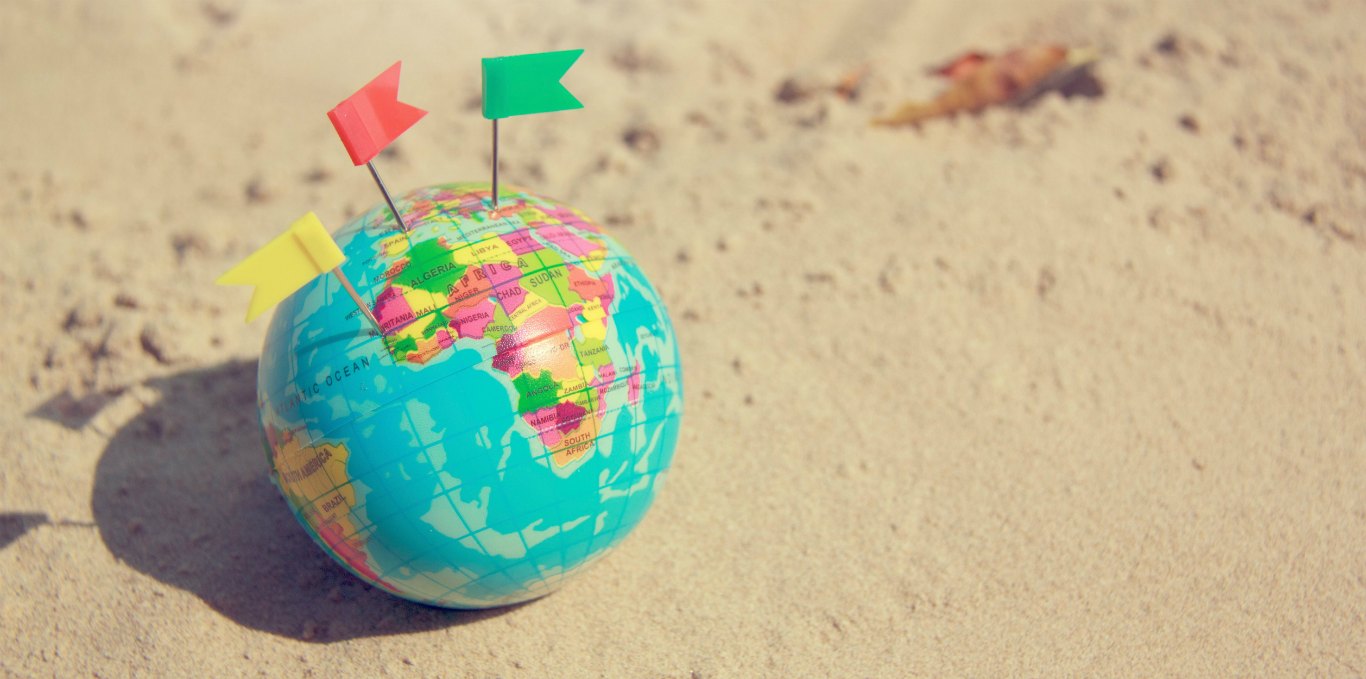
Back to School with Real-life Experiences: Get Going with Google Tours
July 27, 2018
The idea of bringing the outside world of mathematics into a 20 x 40 square foot space to 30 squirrelly kiddos may seem like a daunting task and certainly it is. But we know that math becomes so much more meaningful when it is fascinating, fun and related to students' lives or at least the world they want to explore. Part of the excitement of learning (at least when you're a kid) can be situated in what is referred to as the novelty effect. Essentially there is greater enthusiasm to do something if it is something you have never done before.
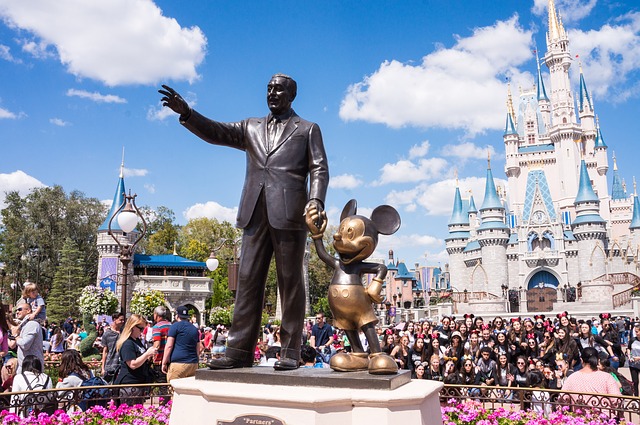
Given that I have been to Disney World several times, I might be excited to go if the average attendance was not 56,000 a day. Kids, on the other hand, are naturally curious and most certainly want to explore the world, but that is not entirely possible given a fifty-minute math block (especially if the wait time is 50 minutes per ride at Disney). Are you seeing the math connections?
So let's explore how you can bring the real-world of math into your student lives without having to leave your school.
Get Going on a Google Tour:
If you like Google Earth, then you will love Google Tours. This web-based tool allows you to connect places in the world to your students lives digitally. Just select the places you want to go and Google Tours will bring you there. Rather than discussing how the Giza Pyramids represents a square pyramid and not a tetrahedron (triangular pyramid) take your students there (virtually) and have them identify the faces, edges and vertex corners.
Here is a simple tour I created for students to identify shapes and learn more about the world: Shapes All Around Us
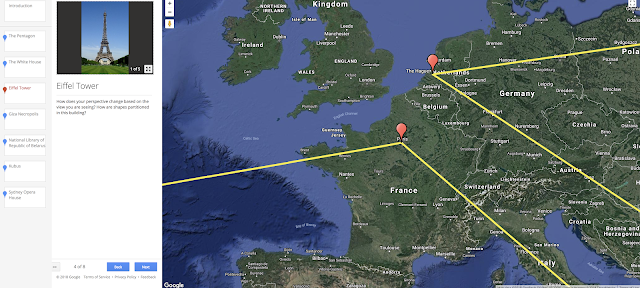
Make it Matter: Student Created Tour
Now that your students are excited about the idea of travel let them create their own Google Tour. I created this graphic organizer to support students in organizing their own Google Tour. By having students record their thinking prior to creating a tour you will save yourself and your students time as they already have a set plan for where they want to go!
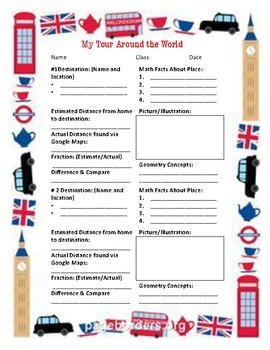
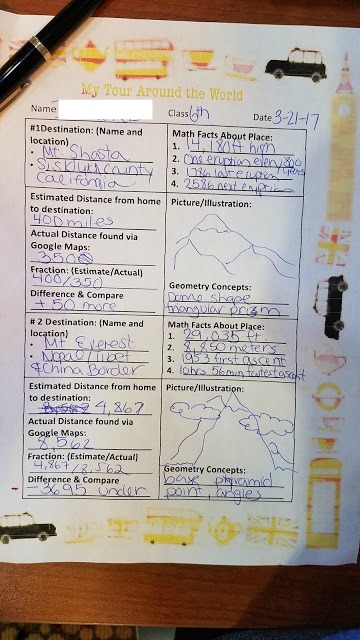
Students can estimate the distance between their school and the location of their destination, make an illustration and record interesting math facts about the place they would like to visit using Wikipedia.
This quick and interactive lesson hits lots of math standards in the context of real-life. Students in grades 4-7 must compute with accuracy and fluency multi-digit numbers using addition and subtraction and what an exciting way to come into context with large numbers than by traveling.
Watch this video to learn how to get started with Google Tours.
Start your school year with a recorded tour of your students summer vacation. Then have them estimate and calculate the distance by using Google Maps.

Want to extend this activity even more, have your students work with a budget and create a family vacation for one of their destinations. Your students can use sites like Travelocity or CheapTickets to find, compare and determine the best way to travel. If they take the direct flight at $1600 to Bangkok, Thailand then they'll have a smaller budget to find a place to stay and may not enjoy the over the water bungalow.

Once your students have experienced the magic with Tour Builder, oh the places they will go. This tool can be used across the curriculum for a literature study to explore a character's journey in greater depth, when studying languages to learn more about the culture and places in a region, and of course in history to relive the journey that real people made.
Want to learn more about making real-life connections with math and earn University credit? Consider taking a course and learn how to design math lessons that are rooted in the lives and interests of your students.
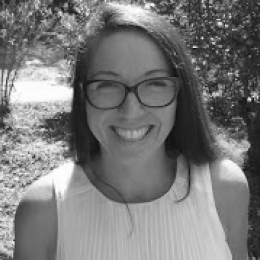 Dr. Patricia Dickenson, PhD, is an Associate Professor of Teacher Education. She is the Program Lead for the Bachelors of Arts In Interdisciplinary Studies with the Preliminary Multiple and Single Subject Credential. She is also the Course Lead for several Courses at National University including: TED 350 Math and Science Methods, ITL 516 Elementary Math Methods, ITL 518 Elementary Science Methods, TED 300 Foundations in Education, TED 310 Educational Psychology. Her research area focuses on mathematics professional development and technology. She has worked in higher education for the past 8 years and was a mathematics coach and elementary school teacher for the Los Angeles Unified school district for over ten years. Dr. Dickenson has published two books and has over 12 book chapters and articles. She recently received the National Council of Teaching Mathematics Grant for Classroom research.
Dr. Patricia Dickenson, PhD, is an Associate Professor of Teacher Education. She is the Program Lead for the Bachelors of Arts In Interdisciplinary Studies with the Preliminary Multiple and Single Subject Credential. She is also the Course Lead for several Courses at National University including: TED 350 Math and Science Methods, ITL 516 Elementary Math Methods, ITL 518 Elementary Science Methods, TED 300 Foundations in Education, TED 310 Educational Psychology. Her research area focuses on mathematics professional development and technology. She has worked in higher education for the past 8 years and was a mathematics coach and elementary school teacher for the Los Angeles Unified school district for over ten years. Dr. Dickenson has published two books and has over 12 book chapters and articles. She recently received the National Council of Teaching Mathematics Grant for Classroom research.
This article was first published at TeacherPrepTech.com.

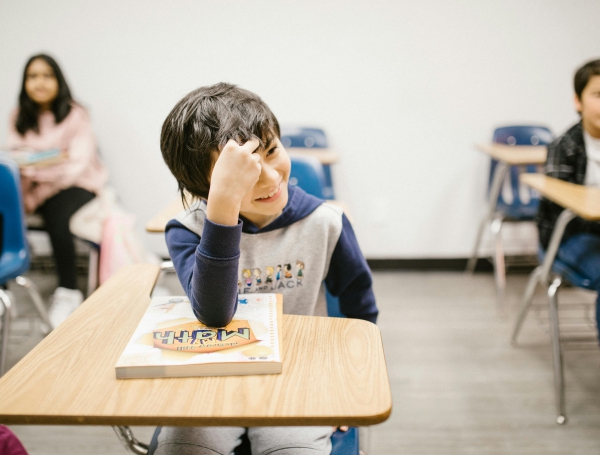
_600_455_s_c1.jpg)
_600_455_s_c1.png)
